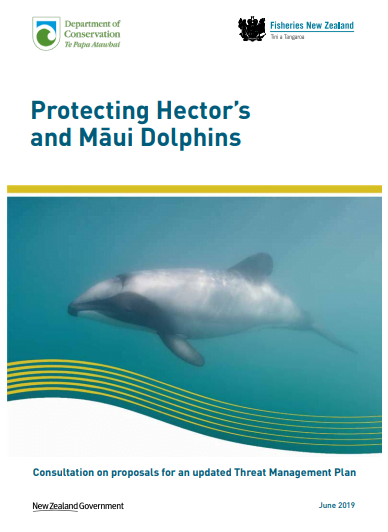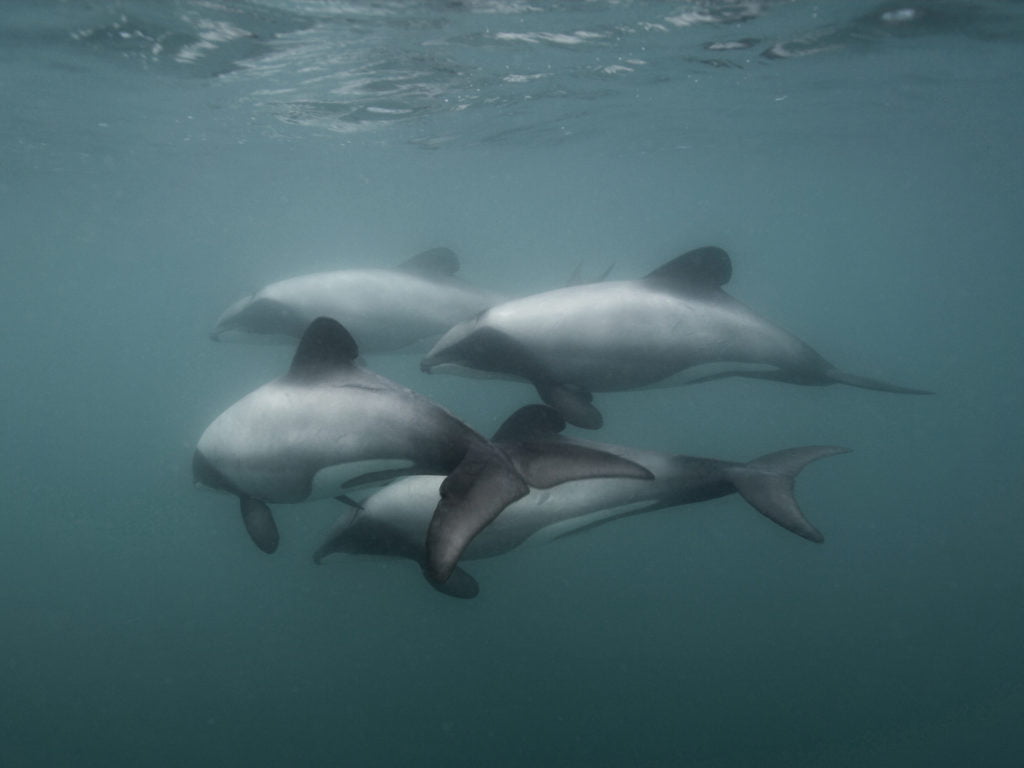We’ve unlocked the mystery behind the recently released Threat Management Plan (from here in we’ll call it the TMP). It’s a very complex document which will bamboozle and confuse the average New Zealander. And even some of the best brains in this space took many hours to understand it!

The TMP outlines recommendations to the Ministers’ of Conservation and Fisheries for further protection of Hector’s and Māui dolphins.
It’s a once in 20 year chance to make a positive impact on our precious native dolphins. Government is now calling for public submissions on the plan by 19th August 2019.
We’ve analysed the document from a Banks Peninsula perspective (sorry we did not look at proposed changes outside of Canterbury).
4 Things You Need to Know
- The TMP will allow up to 49 Hector’s dolphins to be caught in nets per year off the East Coast of the South Island of NZ. Apparently this is acceptable because we can let that many drown, and the population will recover to become thriving again! We don’t think that a plan that calls for one dead dolphin a week is acceptable.
- Option 3, the best scenario for the dolphins proposes protection north and south of Banks Peninsula but leaves a huge unprotected hole near Akaroa. We’ve called this the ‘death zone’. This will force fishermen currently operating in Pegasus Bay and Timaru to fish off Akaroa creating an even worse situation than today for the local dolphin population.
- Given the above, it seems to ignore the vital economic value created by Hector’s dolphins off Akaroa. The total estimated economic value from set netting is $3.5M and trawl fishing is $8.7M per year in the South Island. (there is no information of how these numbers were derived). Eco-tourism drives $25M per year for Banks Peninsula alone. The proposed option 3 changes reduces fishing revenue by just $170,000 per year in Pegasus Bay and $870,000 in South Canterbury. A small amount compared to the tourism benefits. Further extension to close the ‘death zone’ will also have very minor economic impact.
- The TMP is silent on allowing flounder nets inside Akaroa and Lyttelton during the winter months. It’s therefore proposing for this to continue placing risks for the dolphins in the upper harbours. We know for sure dolphins have been caught in these nets recently. Here’s a press article discussing it.
Where are the Dolphins?
The death zone has been justified in the TMP because sightings are seemingly lower off Akaroa. This is simply incorrect and goes against everything we know about the dolphins.
There are many dolphin sightings in the death zone as mapped out below using data from many surveys since 2002.
The TMP has tried to model the habitat of dolphins using a number of assumptions. One is related to public sightings; clearly there aren’t many recreational boats 10 miles off the Akaroa heads! The second is related to water clarity. They have assumed where the water is quite clear, there aren’t many dolphins. This is pretty bad science given the sighting data we have from Otago University.
The Hector’s population around Banks Peninsula is the largest in NZ. The TMP says, therefore it’s OK for many to die in nets. A scenario that’s not acceptable and is completely at odds with our international brand position.
The dolphins face many threats around our national coast lines. Some other sub populations may not survive meaning the Banks Peninsula population has to be strong and thriving. There is no room for set nets. The TMP calls for the BP population to recover to 80% of its carrying capacity (ie best case population) whereas the stakeholder working groups all agreed that 90-95% was more appropriate.

Toxo is a Red Herring
A brief note on Toxoplasmosis which features in the TMP. This is a disease probably contained in cat poo (yes) washing into rivers with the dolphins somehow ingesting enough to kill them. There have been some dead dolphins examined on beaches with toxoplasmosis being the most likely final cause of death. This may be an issue for the dolphins or may not. We simply don’t have enough reliable information.
We know right now 100% that nets are killing dolphins and we have the chance to deal with it today. Toxo is forgive the pun a complete red herring. For this to be included as major threat (and greater than fishing) in the TMP is a significant issue and calls into question the whole integrity of the process.
When is a Sanctuary Not a Sanctuary?
The TMP proposes to expand the Banks Peninsula Marine Mammal Sanctuary out to 20 miles and further up and down the coast, which at a quick read sounds like good news. However we need to be clear that the sanctuary only provides protection for non-fishing threats such as restrictions on seismic surveying and seabed mining. The TMP contradicts itself by calling for non-fishing protection out to 20 miles (ie accepting there are dolphins in this range to be protected), but then allowing fishing within the sanctuary by seemingly saying there are few dolphins in the range.
How Can You Help?
Please help the dolphins by emailing this address [email protected]. outlining your concerns about the situation above.
- A plan calling for one dead Hector’s dolphin a week is not acceptable.
- The death zone off Banks Peninsula is not acceptable. We need net bans all around the peninsula where the dolphins range including in the area off Akaroa Heads.
- Expand the netting ban to include flounder nets in the upper harbours from April to Sept.
- Support option 3 of the plan around Canterbury BUT with further extensions out to 100m in depth.
- Support the TMP proposal for a larger marine mammal sanctuary to protect against mining and other non fishing threats in future.
The best way to make an impact is by sending a personal email with your concerns to [email protected] or you can fill in one of the on-line surveys here or here or here.
Submissions close Monday 19 August 2019.
At the end of the consultation period, DOC and Fisheries New Zealand will analyse your submissions and present them to the Ministers of Fisheries and Conservation for their decision.


